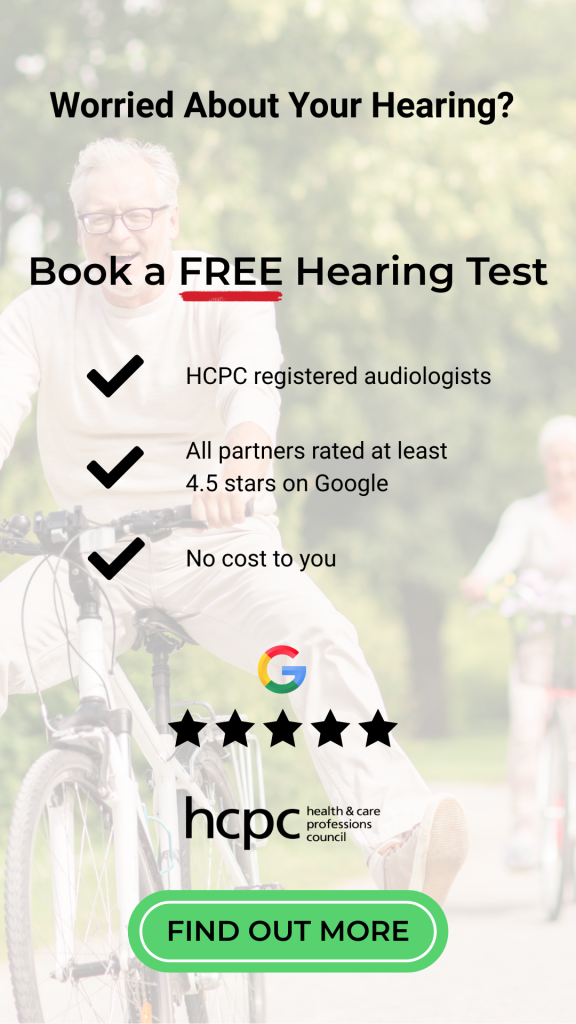Many people assume that passing a hearing test means their hearing is just fine. After all, if the test results say everything is “within normal limits,” why would there be any cause for concern? But for some, the reality isn’t so clear-cut. You might pass a basic hearing test with flying colors yet still struggle to follow conversations, especially in noisy environments, or find yourself frequently asking people to repeat themselves. Sound familiar?
The truth is, hearing is a complex process involving not just your ears, but also your brain’s ability to interpret sounds. A standard hearing test—while a valuable tool—isn’t always sophisticated enough to detect subtle or situational hearing difficulties. This means it’s entirely possible to live with a form of hearing loss that doesn’t show up on traditional audiograms.
In this article, we’ll explore how basic hearing tests work, why they might miss certain types of hearing loss, and what signs to watch for if you suspect something’s off. If you’ve ever felt confused or frustrated by the disconnect between your test results and your everyday experience, you’re not alone—and you’re not imagining things. Let’s dive into the nuances of hearing loss that often go undetected.
Understanding Basic Hearing Tests
When most people get their hearing checked, they undergo what’s known as a pure-tone audiometry test. This is the standard method used by audiologists to determine how well you hear sounds at various pitches (frequencies) and volumes (intensities). During the test, you’re placed in a soundproof booth and asked to press a button or raise your hand when you hear beeps through headphones. The results are plotted on an audiogram, a chart that maps out your hearing thresholds.
If your hearing thresholds fall between 0 and 25 decibels (dB) across the tested frequencies, your hearing is typically classified as “normal.” But here’s the catch: this doesn’t always mean you’re free of hearing problems.
What Basic Tests Measure — and What They Don’t
Standard hearing tests focus primarily on detecting peripheral hearing loss — issues that originate in the outer, middle, or inner ear. They’re good at identifying obvious hearing loss caused by aging (presbycusis), noise exposure, or ear infections.
However, these tests have limitations. They do not assess how well you understand speech in noisy environments, how your brain processes sound, or how fatigue, cognitive load, and attention might affect your ability to hear. In real life, we rarely listen in a silent booth. We interact with people at restaurants, family gatherings, or busy streets — settings filled with background noise and multiple speakers.
The Role of Speech Testing
Some audiologists also include speech recognition tests, where you’re asked to repeat words spoken at a normal volume. This adds another layer of information, but it’s still typically done in quiet settings. That means someone with difficulty understanding speech in noisy environments may still appear to have “normal” hearing on paper.
Interpreting “Normal” Results
Another nuance: “normal” doesn’t mean “optimal.” You might technically hear within the normal range, but just barely. For instance, someone who hears at 20–25 dB is still considered to have normal hearing, but that slight deficit might make it harder to pick up softer consonants like “s,” “f,” or “th” — especially when there’s background noise.
Conclusion
While basic hearing tests are useful, they offer a limited view of your overall hearing ability. Think of them like a snapshot, not the full movie. If you’re passing these tests but still experiencing hearing challenges, there may be more going on beneath the surface — something we’ll explore further in the next section.
Types of Hearing Loss Basic Tests May Miss
Just because your audiogram looks normal doesn’t mean your hearing is functioning perfectly in real-world settings. There are several types of hearing loss and auditory processing issues that standard tests often fail to detect. These hidden problems can significantly affect how you hear and interpret sounds—especially speech—in everyday environments.
Hidden Hearing Loss
One of the most commonly overlooked conditions is hidden hearing loss. This form of hearing damage doesn’t affect the outer hair cells in the cochlea (which standard audiograms measure) but rather the synapses between the inner hair cells and the auditory nerve. In simpler terms, the connection between the ear and the brain is impaired, but the basic hearing thresholds still appear normal on a test.
People with hidden hearing loss often report:
- Difficulty understanding speech in noisy places
- Mental fatigue during long conversations
- Feeling like they “hear but don’t understand”
This condition is frequently linked to noise exposure and aging, even in people who never noticed a problem until conversations became harder to follow.
Auditory Processing Disorder (APD)
Another issue that can be missed by traditional hearing tests is auditory processing disorder. This isn’t a problem with hearing per se, but with how the brain processes sound signals. APD can affect people of any age, though it’s more commonly diagnosed in children. In older adults, it may be misattributed to cognitive decline or simply “not paying attention.”
Common signs of APD include:
- Struggling to follow spoken instructions
- Difficulty distinguishing similar-sounding words
- Trouble keeping up with fast-paced conversations
- Increased effort required to understand speech in background noise
APD often requires specialized testing and may benefit from treatments like auditory training, therapy, or assistive listening devices.
High-Frequency Hearing Loss
Standard hearing tests often test frequencies up to 8000 Hz, but high-frequency hearing loss can begin beyond that range and still affect clarity—especially in understanding consonants. Loss in the higher ranges impacts the ability to hear sounds like “s,” “h,” or “th,” which can make speech sound mumbled or unclear, particularly in group conversations.
This type of hearing loss is subtle, gradual, and easy to miss until communication becomes noticeably strained.
Temporary Threshold Shifts
Sometimes, people experience temporary hearing changes after exposure to loud noise (like a concert), stress, illness, or medications. These threshold shifts can recover, but repeated incidents may lead to permanent changes—even if test results fall back into the “normal” range.
Understanding these often-overlooked conditions highlights why basic hearing tests aren’t the end of the story. If you’re passing tests but still feel something isn’t right, you may be experiencing one of these nuanced forms of hearing difficulty.
Symptoms to Watch For Even If You Pass a Hearing Test
It can be incredibly frustrating to walk out of a hearing clinic with a “normal” test result—only to continue struggling with everyday conversations. If this sounds familiar, you’re not imagining things. There are a number of telltale signs that something isn’t quite right with your hearing, even if your audiogram says otherwise.
You Struggle in Noisy Environments
One of the most common red flags is difficulty understanding speech in background noise. Restaurants, busy streets, or crowded family gatherings often become overwhelming. While others seem to carry on effortlessly, you may find yourself lost in the conversation or nodding along without catching what’s being said.
This is a hallmark symptom of hidden hearing loss or auditory processing issues, where your brain struggles to filter speech from ambient sound.
Frequent Requests for Repetition
Do you often ask people to repeat themselves—especially if they speak quickly or softly? While occasional repetition is normal, needing it frequently is a strong indicator that your hearing isn’t as sharp as it used to be. You might notice you’re leaning in, turning your head, or cupping your ear to catch what was missed.
Speech Sounds Muffled or Unclear
Many people with subtle hearing loss report that speech sounds distorted, even though the volume seems adequate. This is especially true for high-frequency consonants, like “s,” “f,” “t,” and “th.” These sounds are crucial for clarity but can be lost even in mild or frequency-specific hearing loss.
You Feel Mentally Drained After Conversations
Listening fatigue is real. If social interactions leave you feeling mentally exhausted, it could be because your brain is working overtime to fill in the gaps. This is a common experience for people with hidden hearing loss or APD, where constant focus and guessing are needed to piece together what’s being said.
Turning Up the Volume More Often
Whether it’s the TV, radio, or phone, consistently increasing the volume is another subtle sign that your hearing may be compromised in ways not captured by a basic test. You might also notice you’re misunderstanding words in songs or dialogue, particularly when music or background sounds are present.
Avoiding Social Situations
When hearing becomes difficult, many people begin to withdraw socially—not out of disinterest, but because it’s simply too hard or stressful to keep up. This can lead to feelings of isolation, anxiety, or even depression, especially in older adults.
If you’re experiencing one or more of these symptoms, it’s important to trust your instincts. Hearing health is more than just passing a test—it’s about how well you engage with the world around you.
Why Real-Life Hearing Is Different from Clinical Testing
Hearing tests are a critical first step in diagnosing hearing loss—but they don’t always paint the full picture. That’s because real-life hearing involves far more complexity than what’s measured inside a quiet, controlled audiology booth. If you’ve passed a hearing test but still struggle to follow conversations, the problem may lie in how your hearing performs under real-world conditions.
Clinical Testing Happens in Ideal Conditions
Basic hearing assessments, including pure-tone audiometry and speech recognition tests, are usually conducted in soundproof environments. These settings eliminate background noise, echo, and overlapping voices. The test signals are clear and isolated, and you’re primed to listen intently without distraction.
But how often do you get to have a conversation in total silence? In reality, most communication happens in far more chaotic environments—restaurants, family events, grocery stores—where background noise competes with speech, and multiple people may be talking at once.
Real Life Involves Complex Soundscapes
Everyday environments present what audiologists call “speech-in-noise” challenges. This refers to the difficulty of understanding a voice when there are other competing sounds—whether it’s background music, chatter, or street noise. People with hidden hearing loss or auditory processing difficulties may hear tones well enough in silence but falter when speech is embedded in noise.
Standard hearing tests often skip these more nuanced assessments, which can leave significant hearing issues undetected.
Cognitive Load and Listening Fatigue
In real-world conversations, your brain plays an active role in deciphering language. You’re not just hearing—you’re interpreting meaning, body language, and emotional tone, often all at once. For people with subtle hearing loss, this puts added strain on the brain, leading to cognitive fatigue.
This phenomenon explains why some people feel tired after social interactions or say they can “hear fine” but still feel like they’re working too hard to understand.
Directionality and Localization
Another real-life hearing skill that’s rarely assessed is directional hearing—your ability to tell where sounds are coming from. In noisy settings, this helps you focus on the person speaking and ignore irrelevant sounds. Poor directional hearing can make it feel like voices are blending together, even if your hearing test results are normal.
The Impact of Visual and Social Cues
In daily life, we unconsciously rely on lip-reading, facial expressions, and gestures to enhance understanding. These visual cues are often absent or reduced during clinical testing, meaning the experience of hearing in the booth may not align with how we actually communicate.
Understanding these differences underscores why hearing evaluations should go beyond basic tests.
What to Do If You Suspect Hearing Issues Despite Passing a Test
If you’ve passed a hearing test but still find yourself struggling to understand others—especially in noisy or fast-paced environments—it’s essential to trust your experience. You know your hearing better than anyone else, and “normal” test results don’t necessarily mean you’re hearing well. Fortunately, there are steps you can take to dig deeper and get the support you need.
Ask for Advanced or Specialized Testing
Not all hearing evaluations are created equal. While basic audiometry is a useful starting point, it often lacks the depth to uncover more nuanced issues. Consider requesting:
- Speech-in-noise tests: These assess how well you can understand speech against background sound—a common real-world challenge.
- Auditory processing evaluations: Especially useful if you struggle with following conversations or distinguishing similar sounds.
- High-frequency audiometry: Some clinics can test frequencies beyond the standard 8000 Hz, which can reveal early signs of high-frequency hearing loss.
If your current audiologist doesn’t offer these tests, ask for a referral to a specialist who does.
Get a Second Opinion
Don’t be afraid to seek a second opinion, especially if your concerns are being dismissed. Hearing is deeply personal, and what works for one person may not be suitable for another. A different provider might offer a fresh perspective, more thorough testing, or a better understanding of your symptoms.
Consider a Trial with Hearing Aids or Assistive Devices
Even if your hearing loss is mild or doesn’t show up on tests, hearing aids or assistive listening devices can still make a difference—especially those designed to enhance speech clarity in noisy environments.
Some audiologists allow trial periods where you can test devices in your daily life to see how much they help. You might be surprised at the improvement in comprehension and comfort.
Use Communication Strategies
While you’re exploring options, several practical strategies can ease daily listening challenges:
- Reduce background noise whenever possible (turn off music or TV during conversations)
- Face the speaker and pay attention to visual cues
- Ask people to speak more clearly rather than louder
- Use closed captions on television and video calls
- Consider apps or devices that provide real-time captions or sound amplification
Track Your Symptoms
Keep a simple log of situations where your hearing is most challenged. Do you notice problems in restaurants? On the phone? With children’s voices? Tracking patterns can help professionals tailor their assessments and recommendations to your specific needs.
The key takeaway? You don’t need to wait for a hearing test to confirm what your daily life already tells you. Being proactive about your hearing health, even with a “normal” result, can prevent long-term frustration and improve your overall quality of life.
Conclusion
Passing a basic hearing test can be reassuring, but it doesn’t always mean your hearing is functioning at its best in everyday life. Many people experience frustrating symptoms—difficulty understanding conversations in noise, frequent misunderstandings, listening fatigue—even after being told their hearing is “normal.” If this sounds familiar, you’re not alone.
Hearing is more than detecting tones in a quiet booth. It’s about how well you understand speech, process sound, and engage with others in dynamic, often noisy environments. Conditions like hidden hearing loss, auditory processing disorders, and high-frequency hearing loss can all slip past standard tests but still significantly impact your communication and quality of life.
The good news? There are advanced evaluations, supportive devices, and practical strategies that can help. You don’t need to wait for your hearing to get worse before taking action. If your instincts tell you something isn’t quite right, trust them. Advocate for further testing, seek a second opinion, and explore tools that can support your hearing journey.
Your ability to connect, understand, and participate fully in life is worth it—regardless of what a basic hearing test says.
FAQ
What is hidden hearing loss?
Hidden hearing loss refers to difficulty understanding speech in noisy environments, even when a standard hearing test shows normal results. It’s often caused by damage to the connections between inner ear cells and the auditory nerve, which aren’t measured by typical audiograms.
Why do I struggle to hear in noisy places if my hearing test was normal?
Standard hearing tests are done in quiet settings and may not detect how your ears and brain handle complex sound environments. Issues like hidden hearing loss or auditory processing disorders can impair your ability to understand speech in noise without affecting basic tone detection.
Can hearing aids help if I passed my hearing test?
Yes, they might. Some modern hearing aids and assistive devices are designed to enhance speech clarity and reduce background noise, even for those with mild or undetectable hearing loss. Many providers offer trial periods so you can test the benefits firsthand.
Is it possible to have hearing loss in just certain frequencies?
Absolutely. High-frequency hearing loss, for example, may affect your ability to hear consonants like “s” or “th” but still allow you to pass a standard hearing test. These subtle losses can impact clarity, even if overall volume perception remains intact.
What should I do if I feel something is wrong with my hearing?
If you’re experiencing symptoms but your test was normal, ask for more comprehensive assessments like speech-in-noise testing or auditory processing evaluations. Trust your experience, seek a second opinion if necessary, and explore tools or strategies that support your daily hearing needs.
“This article is for informational purposes only and is not a substitute for professional medical advice, diagnosis, or treatment. If you are concerned about your hearing or ear health, please consult a qualified healthcare provider.”






